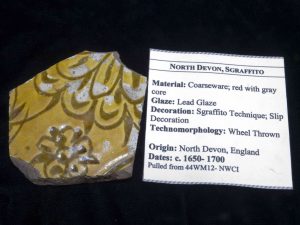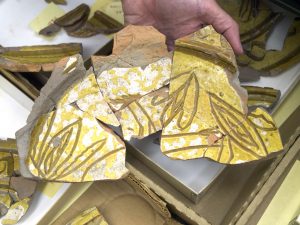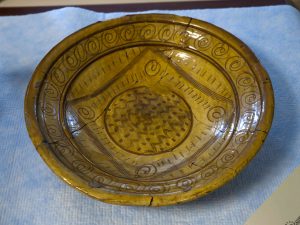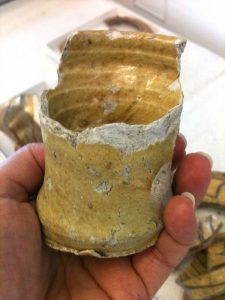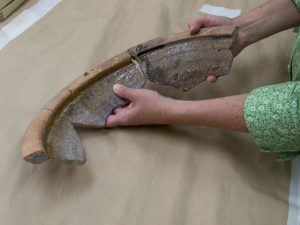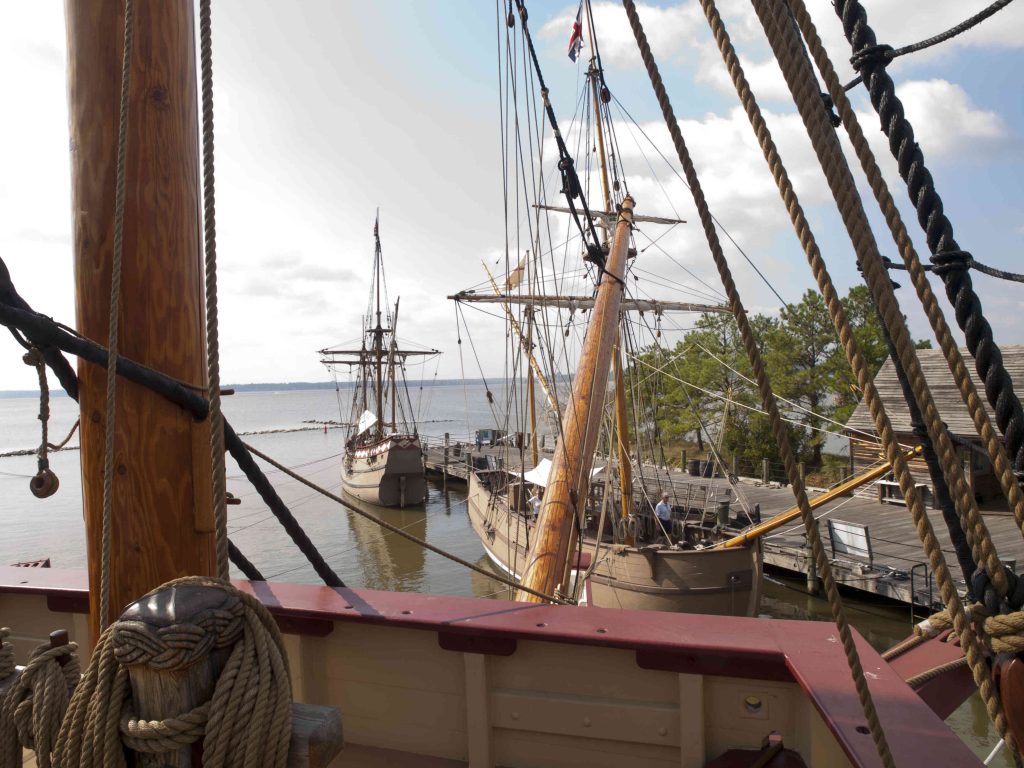
Intro
The story of pottery production and trade with America is a tale of being in the right place at the right time; hard work; access to resources; skills and entrepreneurship; adventure; travel by ship; new lives in foreign land and profit.
Through telling this story we can discover why Bideford was an important centre for pottery production, who were the potters, why pottery was exported and where; the relationship with the tobacco trade and evidence of pottery found in American collections.
Why North Devon and Bideford?
Local raw materials shaped the pottery’s distinctiveness, creating the plain earthenware and decorative sgrafitto (design scratched through the surface) wares. Potters used red clay from the pit near Fremington; white ball clay for slip (liquid clay); gravel from the river Torridge; wood and furze (gorse) to fire the kiln. Merchants supplied lead-ore for glaze and coal for the kilns. Bideford’s location on the River Torridge enabled smaller vessels to deliver raw materials and collect finished pots, and transatlantic ships to load and unload goods. By the 17th century, Bideford was the biggest, production centre in North Devon, the boom time being between 1630 and 1690. Millions of North Devon pots were supplied to South West England and exported to Ireland, Wales and North America. 95% were plain earthenware such as jugs, bowls, jars and cooking pots. Only 3- 5% of pottery made was the decorative honey-yellow sgrafitto wares, including plates, mugs, candlesticks and dishes.
Bideford Potteries
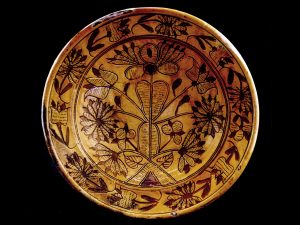
The 17th C potteries were at the East and West of the River Torridge. They were family-based, but the industry grew and met demands of the expanding town and trade. In ‘Potter’s Lane’ (Mill St extending on to North Road) up to 30 kilns billowed out black smoke from all the burning furze. The Beale family set up several potteries and owned properties.
There were five potteries in Mill St, North Road and adjacent tenements in 1671-1687 employing 17 men. Crocker’s Old Pottery was built in 1668 and lasted until 1896. It was built between North Rd and The Strand, beside the tidal Pill. Crocker’s’ sgraffito wares have been discovered at Jamestown in Virginia. There were also at least two 17th C potteries at East-the-Water.
Pottery exports
Bideford had experienced sailors, ship-owners and merchants who could transport goods to America and the New World. This tells us about early English colonists and how they lived their lives. Pipkins (saucepans), cooking pots, three-legged cauldrons, large dome topped ovens, storage jars, bowls and milk pans were exported.
Tobacco was imported upon the ships’ return. Baluster jars, containers for foodstuffs such as fish and butter, were made in enormous quantities between the late sixteenth and early century seventeenth centuries. In 1585 Bideford colonists carried them to present-day Roanoke Island in North Carolina. Sherds (small pieces) have also been found in North America from English sites dated up to about the 1630s, stretching across Virginia, Canada and Bermuda.
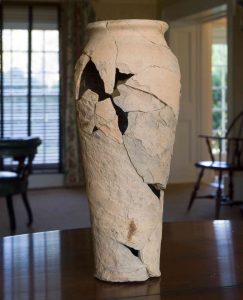
Tobacco trade – Bideford as a place of great wealth
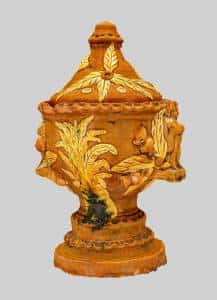
There was a significant and inter-dependent relationship between pottery and tobacco. Earthenware and household goods were exported, and tobacco imported on return. The heyday for this trade was between 1680 and 1730. Bideford was the second biggest port after London, for the transatlantic tobacco trade. For example, 4 million lbs of New World or Virginian tobacco were exported on from Bideford in 1640.
Notable merchants and ship owners included John Strange (Mayor of Bideford who died during the Plague), George Shurt, John Smith and John Davie. John Davie built his mansion Colonial House in 1688, parts of which remain in the fabric of The Royal Hotel located at the end of Bideford’s old bridge. Merchant’s houses built in the late 1600s in Bridgeland St also illustrate this wealth and can still be seen today.
American collections and connections
There are many 17th C sites in present-day Virginia, North Carolina, Maryland and other Eastern States where examples of sherds (small broken pieces) and larger fragments of North Devon pottery have been found in archaeological digs and surveys. Finds include both sgrafitto and plainware. For example, pieces of Baluster jars, milk pans, a dripping dish, a drugs cup, plates, mugs, bowls and milk pans. Sites include early tobacco plantations in Virginia and English settlements on Roanoke Island, North Carolina and at Jamestown, Virginia. These finds are held in Foundations and State collections and are prized by the curators as they show us how English colonists were living their lives. Author and © Sadie Green, January 2021
